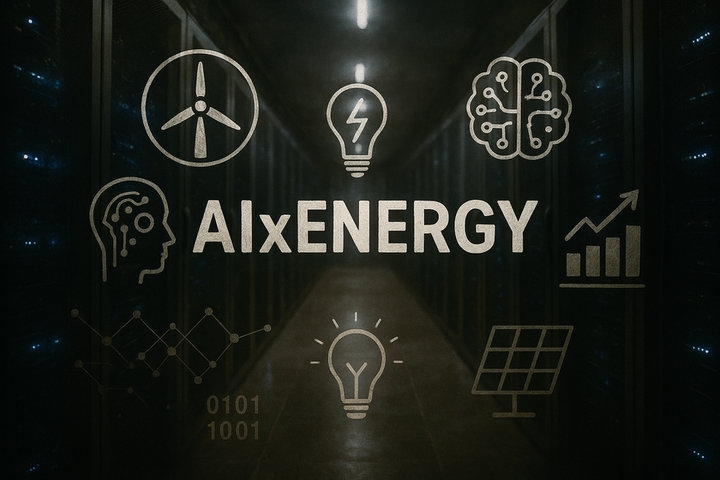11.24.25: AI Partnerships Drive Hybrid Energy System Innovations
AI is reshaping the global energy system, driving soaring data-center demand, nuclear-powered compute plans, and urgent grid upgrades. From real-time visibility tools to advanced microgrid controls, this week shows a grid under pressure—and AI accelerating both its capabilities and its constraints.

The past week revealed how rapidly the global energy system is being rewritten by artificial intelligence, not as an abstract computational force but as a physical driver of infrastructure change. From distribution networks straining under the weight of new data center demand to nuclear-powered compute clusters on the geopolitical frontier, AI is accelerating a transformation that touches every layer of the power sector. Utilities, governments, and technology firms are beginning to confront the same reality: the energy architecture built for the twentieth century cannot sustain the intelligence engines of the twenty-first. What emerges across this week’s reporting is a portrait of a grid entering a formative era—one defined by real-time visibility, rising load, and the race to build an energy system capable of thinking, adapting, and enduring under unprecedented pressure.
AIxEnergy News Articles (11.18.25 - 11.24.25)
Active Grid is leading the charge in transforming grid management by implementing AI-powered solutions that enable real-time visibility, addressing the surge in energy demand from AI data centers and electrification efforts. This strategic shift from reactive to proactive grid management could redefine market dynamics, positioning these companies as key players in the evolving energy landscape. The integration of AI in grid operations underscores the critical need for infrastructure upgrades to support increased load demands, highlighting potential multibillion-dollar investments in grid modernization. [Read more]
Russian President Vladimir Putin plans to leverage small floating and land-based nuclear stations to power AI data processing centers, aiming to boost energy security and independence. This move highlights Russia's focus on nuclear energy for AI infrastructure, although specific details on investment or timelines remain unspecified. [Read more]
Data Center Power faces a strategic overhaul as AI demands redefine data center design. The urgent need for infrastructure investment to support AI-driven energy consumption is evident. This shift may reshape market dynamics and power distribution strategies within the sector. [Read more]
The SC25 keynote warned that AI's rapid advancement risks overwhelming power grids due to increased data center demand. Energy providers face a critical moment to upgrade infrastructure, potentially requiring billions to support AI's power needs. [Read more]
AI's energy-hungry data centers are straining America's outdated grid, yet offer a path to modernization when combined with intelligent grid devices. Although specific metrics are absent, the aging grid could harness AI for optimizing infrastructure. Substantial investment in transmission upgrades is essential for integrating AI technologies, enhancing grid resilience and efficiency. [Read more]
The study introduces a decentralized robust global integral terminal sliding mode control (GITSMC) strategy using wind turbine technology to stabilize load frequency in multi-area interconnected microgrids. This method enhances grid reliability by addressing uncertainties from solar PV and wind generation, achieving frequency stability rates of 94.9% and 94.4%. The focus on GITSMC underscores a shift towards integrating advanced AI controls in renewable energy systems. [Read more]
Westinghouse and Google Cloud have partnered to develop an AI-powered platform using proprietary models to optimize reactor construction. This collaboration aims to enhance Westinghouse's position in AI-driven energy production, potentially improving nuclear construction efficiency. [Read more]
OpenAI and Foxconn will develop multiple generations of data center hardware to meet AI models' evolving needs. This partnership aims to enhance OpenAI's infrastructure capabilities. However, the article lacks a direct connection to energy infrastructure. [Read more]
Conclusion
This week revealed a quiet but notable convergence between artificial intelligence and modern energy systems. New arXiv research introduced a resilient controller design that improves load-frequency stability in interconnected microgrids, while a separate study quantified the compute and carbon footprint of image-generation models, underscoring AI’s growing environmental toll. T&D World added a practical dimension by highlighting Active Grid’s real-time visibility tools, which enhance operational awareness and help utilities manage rising variability. Together these events trace a broader narrative: AI is simultaneously strengthening the capabilities of energy infrastructure and increasing the demands placed upon it, sharpening the balance between technological progress and environmental responsibility.
